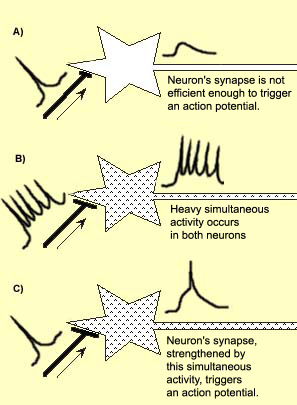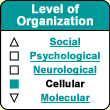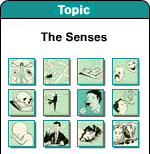|
|



Conscious learning is not the only thing that can strengthen the connections in a neural network. Our brain is also designed to detect recognizable patterns in the complex environment in which we live, and encode them in its neural networks automatically.
Thus, we learn some things effortlessly–such as what somebody’s face looks like–while others, such as theoretical mathematics, take more work. It all depends on the networks that already exist in our brains. The presence of these networks can be understood in light of their usefulness in the evolution of our species. |
|
|
| PLASTICITY IN NEURAL NETWORKS |
|
Learning depends
on the plasticity of the circuits in the brain - the ability
of the neurons to make lasting changes in the efficiency of their synaptic
transmission.
The brain can thus be said to store information in networks
of modified synapses (the arrangement of which constitutes
the information) and to retrieve this information by activating
these networks.
Our understanding
of the rules that govern association and the networking of
neurons goes back to the groundbreaking work done by Donald
Hebb over 50 years ago. Hebb had an intuition that if two
neurons are active at the same time, the synapses between
them are strenghtened. This hypothesis inspired many researchers,
and the first mechanism supporting it, long-term
potentiation (LTP), was discovered in the early 1970s.
The neurons involved in establishing
a network must already be connected by synapses in order
for these synapses to be strengthened or weakened. Networks
are thus fashioned out of pre-existing “wiring”.
Some of these pre-wired networks, such
as those in the hippocampus, play a key role in the
formation of memories. |
|
 |
Even today, Hebb’s rule, as it is often known, remains one
of the primary factors for predicting which synapses will be strengthened
in a network of neurons. More recent research has uncovered other
characteristics of the networking of groups of neurons. We now
know, for example, that the LTP that leads to synaptic strengthening
is very specific to neurons that are activated simultaneously,
and only to such neurons. We also know that in addition to being
associative, LTP can be cooperative: the activity of several neurons
converging onto a single neuron facilitates the strengthening of
these synapses.
|
|





